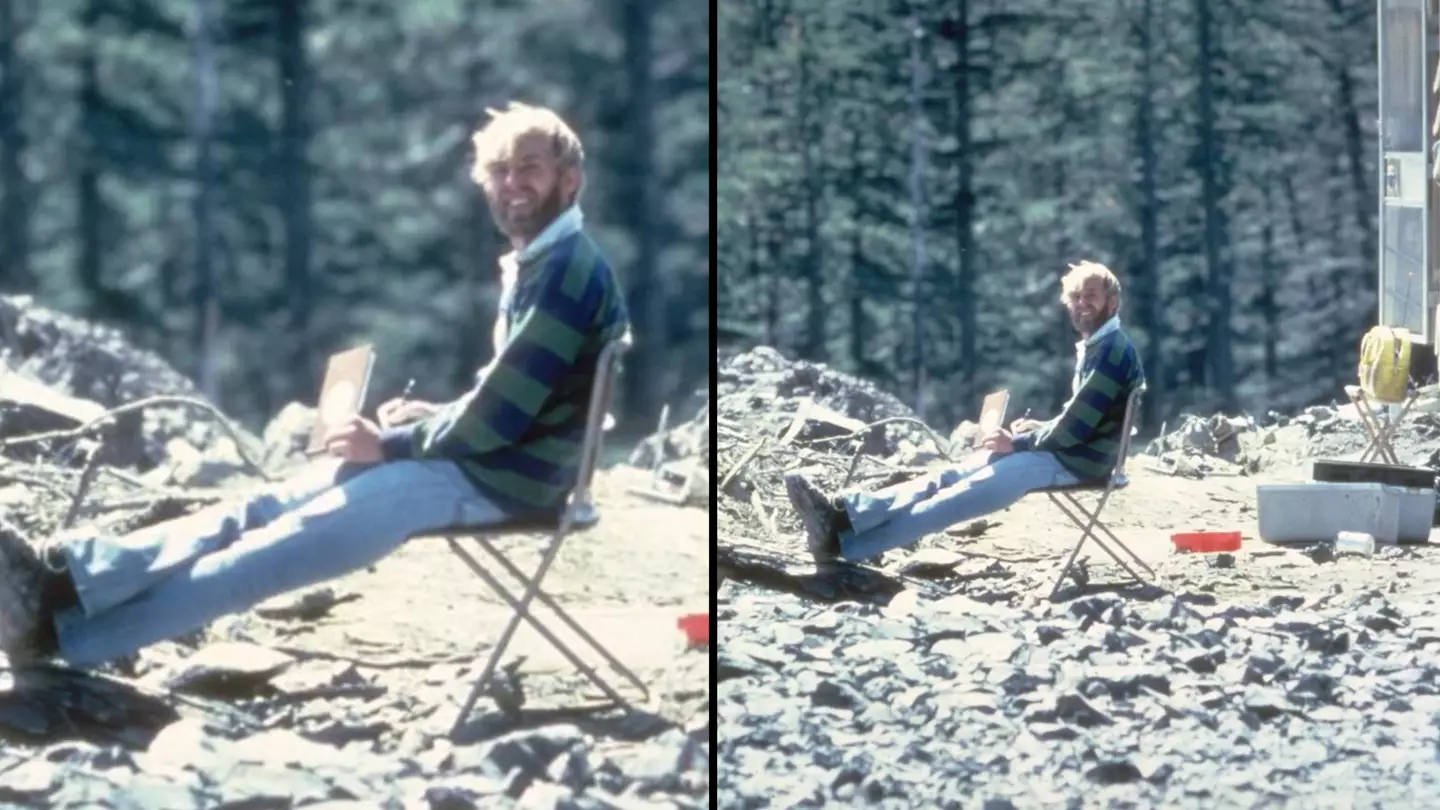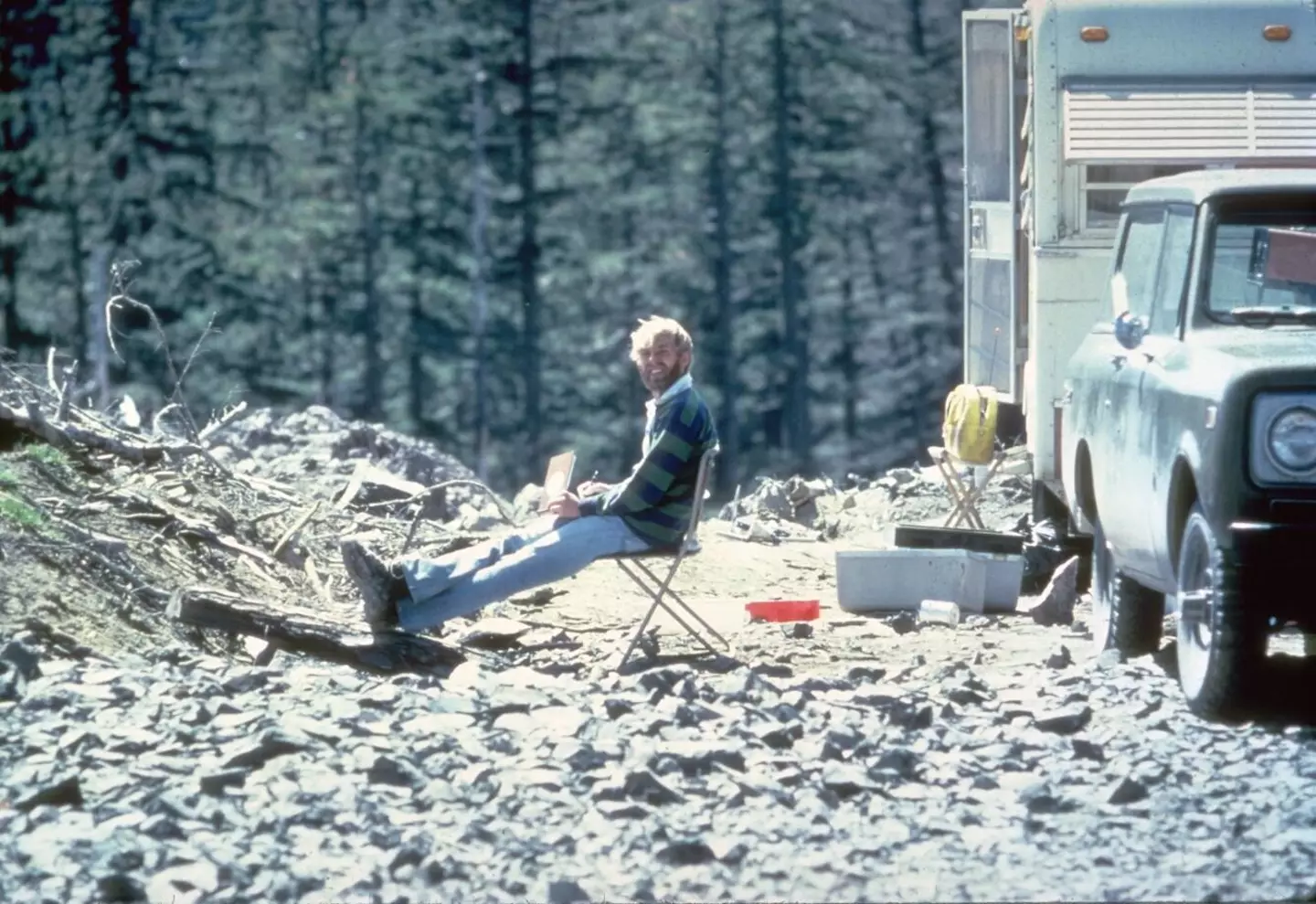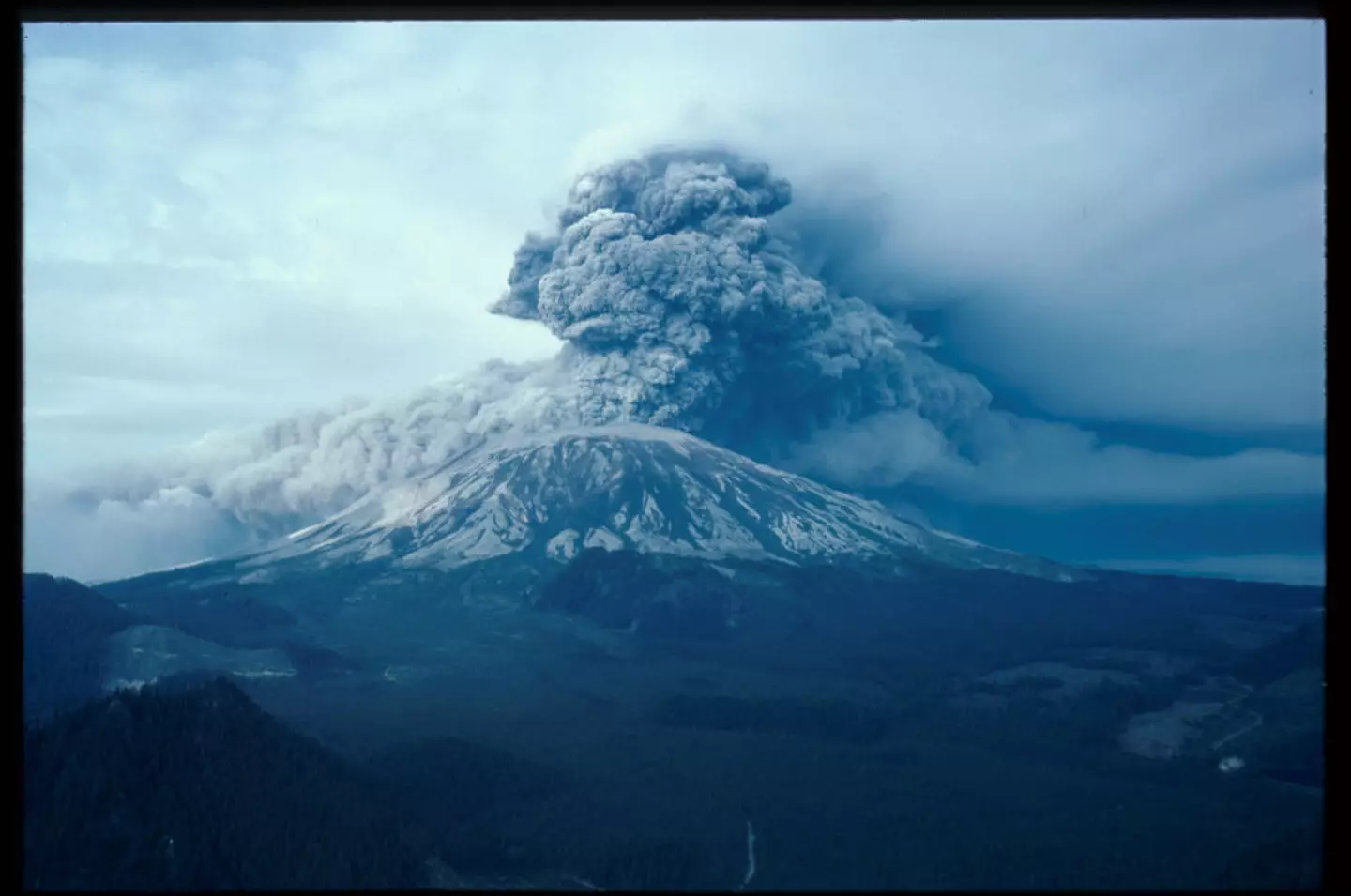
The final photo of volcanologist David A. Johnston proves just how brutal and unforgiving mother nature can be.
Johnston had been fascinated by volcanos and volcanic activity since a young age, later dedicating his life to studying the natural phenomena. He would ultimately work for the United States Geological Survey with a primary focus on studying volcanic gasses and their relationship to eruptions.
When reports of increased activity occurring at the previously dormant Mount St Helens, Washington, began to show in 1980, he headed out to the region to begin studying the volcano.

The 1980 Mount St Helens eruption
Dormant since the 1840s, Mount St Helens began to show increased activity in March of 1980. Earthquakes were reported in the region during the March and April of that year. This was followed by steam eruptions and bulges in the side of the volcano, which suggested that magma was moving around underneath.
Advert
Access to areas around the crater were subsequently prohibited as authorities worked to prepare for a possible eruption.
This would occur on 18 May, with a 5.1 magnitude earthquake being followed by an explosion and an extremely lethal sideways explosion, which caused part of the mountain's north face to collapse.
The eruption would go on to become the most destructive in American history, devastating an area of 596 square kilometres (229 square miles) around the volcano and killing 57 people.
David Johnston and the Mount St Helens eruption
On the morning of 18 May, 1980, Johnston had been monitoring Mount St Helens for volcanic activity at an observation post six miles (10 km) away.
Johnston's work in the region had been crucial in convincing authorities to keep the area around the volcano closed to the public, despite pressures to reopen, a decision which is thought to have saved so many lives.

After noticing a bulge on the side of the mountain, Johnston and a fellow scientist theorised that Mount St Helens could be erupt with a deadly lateral blast and volunteered to continue monitoring the volcano from the Coldwater II observation post to the north of the mountain.
After witnessing the blast, Johnston made an attempt to get in send a radio transmission of the eruption to nearby Vancouver, with his final recorded words being: "Vancouver, Vancouver! This is it!"
His transmission would never make it.
After the eruption, teams worked to locate Johnston and the Coldwater II observation post, both of which had been swept away in the blast.
Years later, pieces of his USGS trailer were recovered, however, his remains were never found. Coldwater II would later be re-named 'Johnston Ridge' in honour of Johnston and his work.
Topics: Community, Environment, US News, Weather